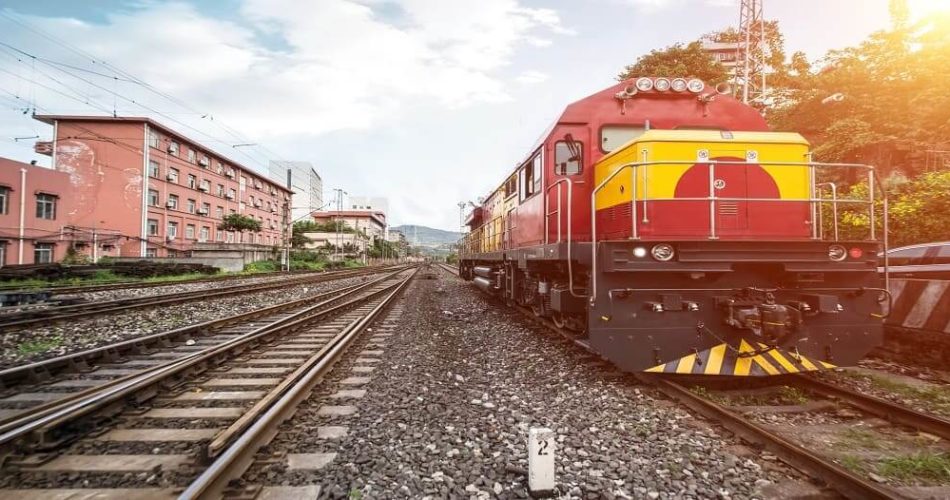What is the Silverline project? Why is it trending? Protests have erupted across Kerala over the SilverLine, a semi-high speed railway project that’d run trains at 200 km/h between the state’s northern and southern sides.
The project is anticipated to cost Rs 63,940 crore. Read on to learn more about the Silverline project UPSC topic. Make your notes from this topic as you can get a few questions in your upcoming UPSC exam.
Silverline Project – UPSC Key Points
Learn about the key points of the Silverline Project in the sections below:
What is the Kerela Silverline Project UPSC?
From Thiruvananthapuram to Kasaragod (South to North), the 529.45 Km network will run across 11 districts and 11 stations. At 200 km/hr, the journey from Kasaragod to Thiruvananthapuram will take less than 4 hours after the project is completed. The Indian Railways network currently takes 12 hours to travel.
The Kerala Rail Development Corporation Limited (KRDCL) is in charge of the project, which has a 2025 completion date. The Kerala Railway Development Corporation Limited (KRDCL), often known as K-Rail, is a joint project between the Union Ministry of Railways and the Kerala government that was established to roll out large-scale railway initiatives.
Motivation Behind the Silverline Project
Kerala’s old railway infrastructure, according to urban policy analysts, will not be able to meet future needs. Most trains operate at 45 km/h on the existing track because of the frequent twists and turns.
The government expects that the SilverLine project will alleviate a significant volume of traffic from the existing portion and speed up commuter travel, resulting in fewer traffic jams and fewer accidents on the roadways.
As per the government, the line will aid in the reduction of greenhouse gas emissions, the expansion of Ro-Ro services, the creation of jobs, the connection of airports and IT corridors, and the speeding up of the development of the areas it travels through.
Also Read: Constitutional Morality: Check Out the UPSC Notes and Prepare for the UPSC CSE!
Key Features of the Silverline Project
The initiative will comprise Electric Multiple Unit (EMU) trains with 9 cars that may be expanded to a total of 12 cars, as per K-Rail. The anticipated passenger capacity per train for a 9-car set is 75, based on the average daily traffic of 80,000 passengers.
The railway line will run from Thiruvananthapuram to Kottayam, Ernakulam (Kakkanad), Kollam, Chengannur, Cochin Airport, Kozhikode, Kannur, Thrissur, Tirur, and Kasaragod, with stations in Kottayam, Ernakulam (Kakkanad), Kollam, Chengannur, Cochin Airport, Thrissur, and Tirur.
There are a total of 1,383 hectares to be purchased, including 1,198 hectares listed as private land. The project has been given Rs 2,100 crore by the Kerala Infrastructure Investment Fund Board (KIIFB), the government’s central investment arm.
Why is the Project Facing Opposition?
Environmentalists have expressed worries about potential ecosystem impact, while the state cabinet believes that the train line will reduce greenhouse gas emissions. They are worried about irreversible damage to the state’s waterways, rice fields, and wetlands. They anticipate this will lead to more flooding and landslides in the future.
The SilverLine line passes through no designated places, such as national parks, wildlife refuges, biosphere regions, or other environmentally sensitive areas.
However, the study points out that the alignment is fairly parallel to one of the main biodiversity hotspots, the Western Ghats, and so, biodiversity consequences must be carefully studied. They include the villages of Madayipara, Ponnani, Kadalundi, and Thirunavaya.
K-Rail estimates that 9,314 structures would have to be demolished. At least 10,000 families are expected to be forced to relocate. If the Environment Management Plan (EMP) is finished, this sum might be doubled.
Also Read: Anti Dumping Duty UPSC: Get All The Important Notes on This Topic Here
Current State of the Project
The state government has begun the land acquisition process after receiving Cabinet clearance in June of this year. The 1,198 hectares required for purchase will be made up of private land.
The Cabinet has also approved a Rs 2,100 crore administrative clearance for the Kerala Infrastructure Investment Fund Board (KIIFB), the government’s principal investment arm.
As part of the initial step of the purchase, regional revenue and K-Rail officials are delineating land and placing boundary stones. This is done to provide officials with a rough estimate of how much private land will need to be purchased and how many households will need to relocate.
The initiative has only received in-principle permission from the Centre, despite CM Vijayan’s letter to PM Narendra Modi seeking his “personal assistance” in obtaining the necessary approvals. The Kerala government, the federal government, and global financial organizations will all contribute to the construction of the line.
Conclusion
We hope that you learned the key points of this project. Takedown these UPSC notes in your notebook or device so that you can read about them later. You might get questions from this topic in any of the UPSC exam stages. For more current affairs topics, you can visit the blog section of UPSC Pathshala. By doing this, you can definitely improve your UPSC preparation.
Also Read: CSTO UPSC: Learn about the History, Objectives, Members and More







